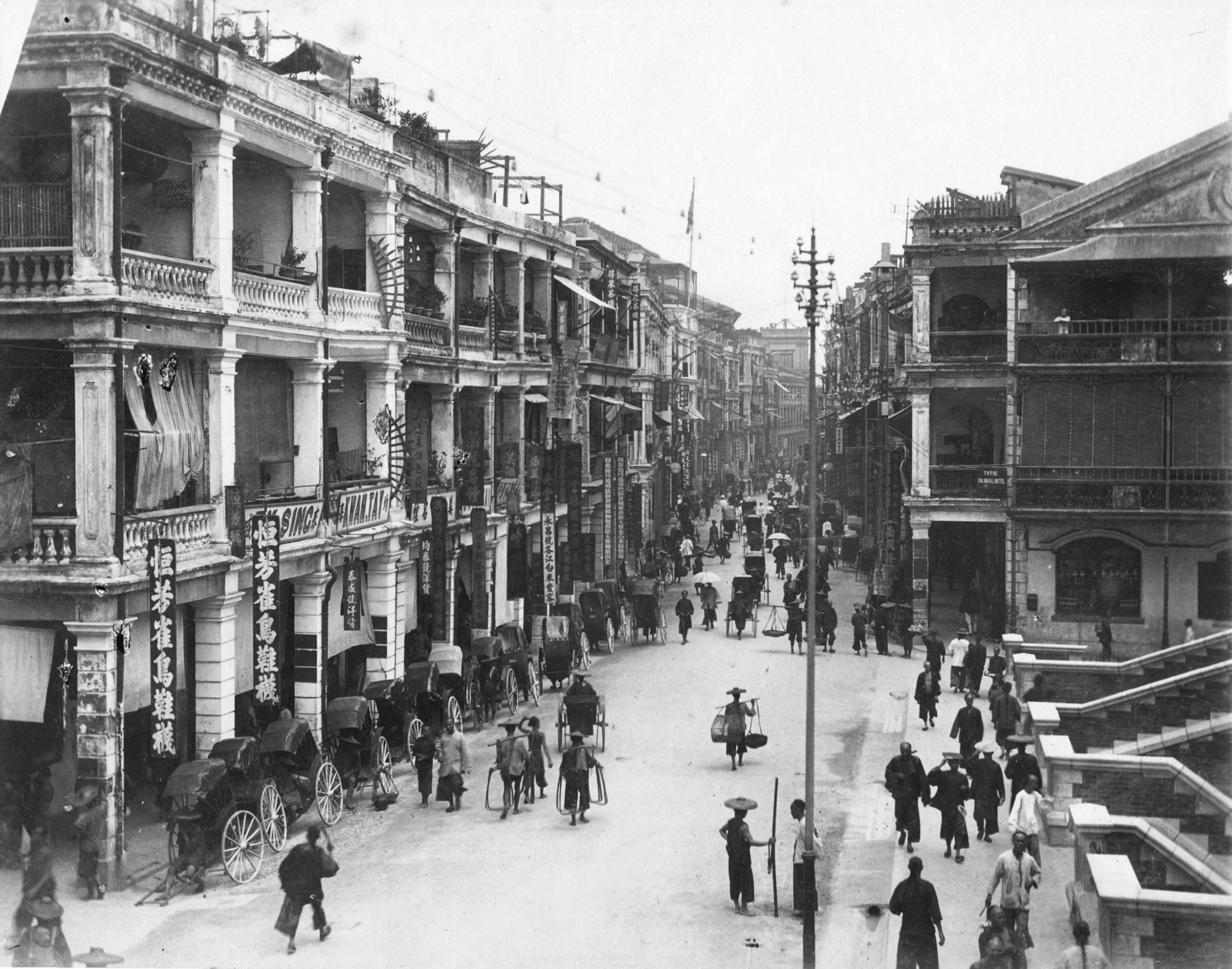
- While the Brazilians were captivated by Hong Kong, they were not as impressed with Macau – save for Portuguese poet Luís de Camões’ cave – or indeed the British
The first Brazilian circumnavigation of the globe included stops in Hong Kong and Macau in 1880 and led to the delegation’s discovery of a whole new world, as recounted in this excerpt from a new book about the voyage:
On the afternoon of May 28, 1880, the Vital de Oliveira arrived in Hong Kong. For a long time, the Brazilian corvette’s crew did nothing but answer the salutes of warships from various parts of the world that were in port. According to the Vital de Oliveira’s logbook, “there were 11 salutes”.
As soon as the ship dropped anchor, the crew received on board Agostinho Guilherme Romano, Brazil’s consul in Hong Kong, who accompanied them on their visit to the city’s Portuguese association, the Club Lusitano. The crossing from Singapore had taken eight days, “with favourable winds and a propitious sea”.
The Vital de Oliveira’s commander, Julio César de Noronha, noted that from Aden there had been lightning every night, but that was all. “At 3:17 in the afternoon of May 28, we anchored in Victoria Bay [Victoria Harbour] with eight fathoms of water, muddy bottom […] The English corvette Cosmus and the hulk Victor Emmanuel, the German frigate Prince Adalbert and the Italian corvette Victor Pizzani, under the command of the Duke of Genoa, were anchored in the harbour.”
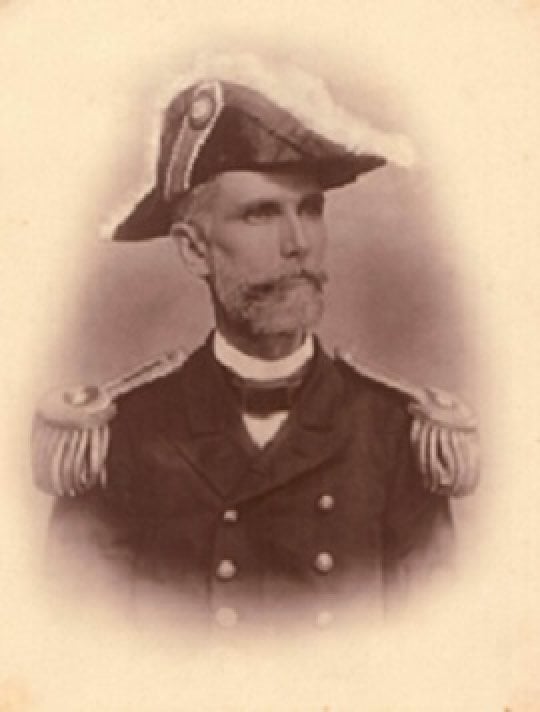
Victoria Harbour, although sheltered, had suffered enormous damage from a typhoon in September 1874, which had also devastated Canton and Macau. “In Hong Kong there are naval resources of all sorts, and England has made a small armoury where she repairs her ships,” the logbook notes. “The climate is so hot and humid that the hygrometer is always kept at the maximum limit of its range; the rains are frequent and the mountain tops are usually veiled in fog.
“The SW [Southwest] monsoon, whose regularity is so well known, blew for three days, giving way to Northeast, which was the dominant wind direction during the 19 days we were in Victoria Harbour. The number of junks and steamers, both in the harbour and on the canals and coast, is remarkable.”
Chris Patten’s Hong Kong Diaries take us behind the scenes of 1997 handover
The city of Hong Kong, on a mountainous island, had been ceded by China in 1842 to the British, and had become a flourishing place, with its free port. Disembarking at Victoria Harbour “is easy, the quay is all stone and the streets are lively and busy. Beautiful stretches of tree-lined road with a gentle slope encircle the mountain on which a large part of the city is built, making it easy, comfortable and pleasant to ascend, usually by chair for a modest price.”
A correspondent for O Apóstolo wrote that the Brazilian corvette was surrounded by little boats of Chinese merchants offering objects and trinkets of all kinds.
“It is difficult to restrain, on one hand, the natural desire to acquire so many curious things; and on the other, the ardour of the sellers. If we let them operate freely, they would approach the ship in a mob; to repel them we are forced to resort to this weapon already known in this arena, the fire hose.”

The Brazilians’ first impression was one of enchantment at a world different from anything they had known. Commander Noronha wrote, “We are seeing pass before our eyes, as in a dream, all that we have been accustomed to see since childhood in fantastical books or wonderful tales: and now it is the heavy junk, with its stern in the air, its three masts sloping differently, its sails of mats unfurling from top to edge, and its numerous garrison, sitting indolently or looking with curiosity at the colours of the new flag that appears on its waters; […] and, completing the panorama, a natural vista worth of admiration, laughing like ours, gilded with a thousand reflections, and adorned with beautiful buildings that seem to climb up Victoria Peak, lost among thick verdure, and indolently watching themselves in the green mirror of the harbour waters.
“What a panorama! How well the sacrifices of the long and arduous trip are repaid by the spectacle that can be seen here, and the intimate satisfaction of knowing we are almost at the antipodes of our beautiful Brazil.”
All the staff of the diplomatic mission disembarked in Hong Kong. Ambassador Eduardo Callado and his family, accompanied by Henrique Lisboa (secretary of the diplomatic mission), left immediately for Shanghai. The division chief, Silveira da Motta, stayed on the corvette until she left port on June 17, 1880.
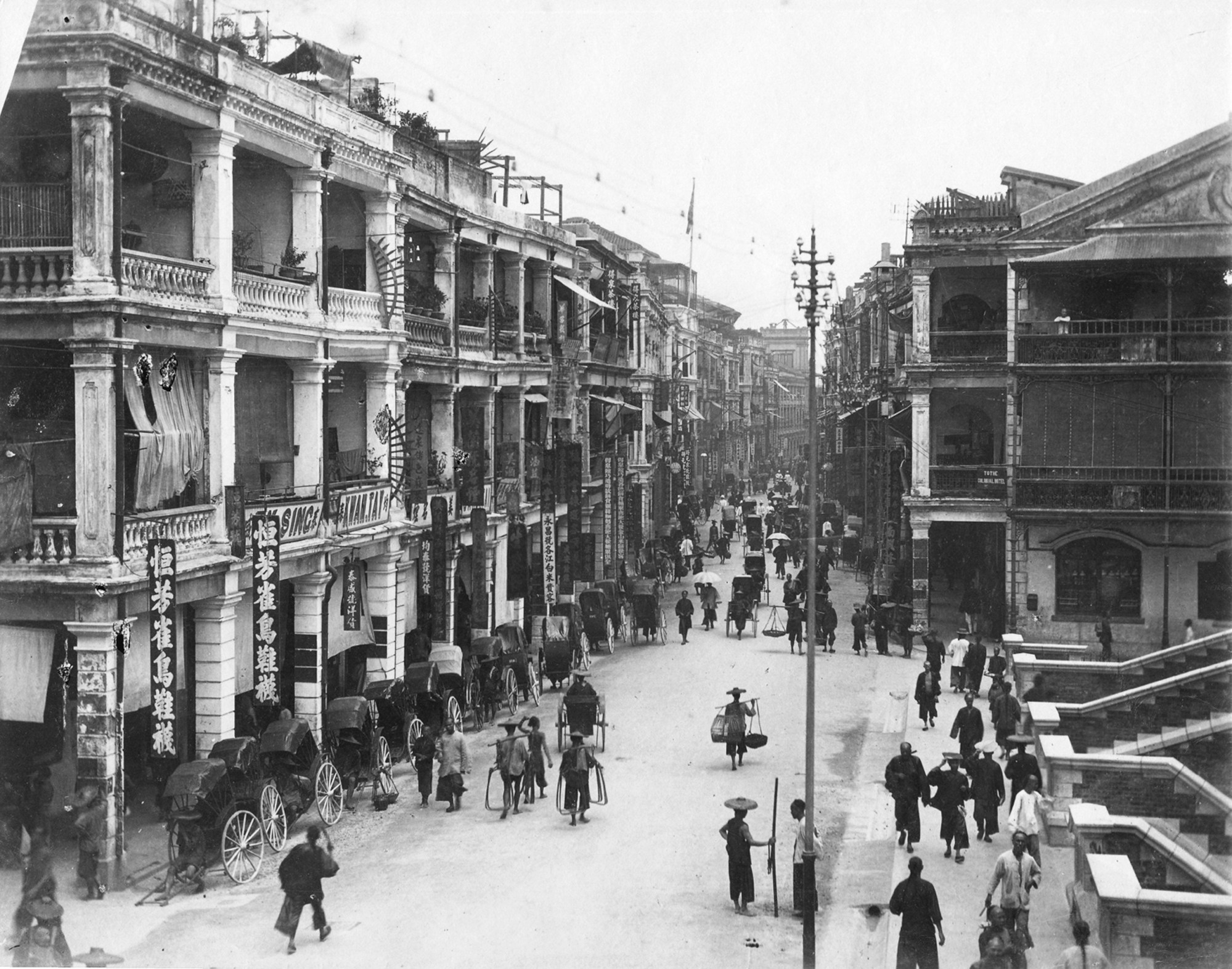
From Hong Kong, officers of the Vital de Oliveira visited Macau and Guangzhou. In Macau, they went to see the hospital of the Chinese colony, which caught their attention.
“The rooms for the sick were dark and without ventilation; the beds were made of stone, with a wooden cylinder as a pillow, and a tile drain, which serves as a urinal, beside the bed,” noted Galdino Cícero de Magalhães, the ship’s doctor. “Some of the patients have only a woollen cloth as a cover.
“The doctors do no physical examination; they listen to the patients’ statements, look at them and prescribe them panaceas.”
Are Scientology founder’s far-fetched tales in China diaries actually true?
Then the officers visited the cave where 16th century Portuguese poet Luís de Camões, exiled in Macau, had retired to write his epic Os Lusíadas. “Today the cave is completely transfigured, since it belongs to a wealthy Portuguese citizen, Mr Lourenço Marques,” the doctor wrote.
Lisboa recalled that “the poetic grotto, where tradition has it that Camões completed the exquisite work that immortalised his name, is located within a private property, whose owner is happy to provide access to the picturesque site, where, in the shade of lush vegetation, the Lusitanian bard sang the glories of his ungrateful homeland.
“In a cavity between two rocks is a bust of the author of The Lusiads, surrounded by inscriptions from visitors paying homage to a glory now universally recognised. It gives on to a splendid view of Macau and its placid bay, and it is understandable that such a pleasant refuge would give rise to such sublime inspiration.”
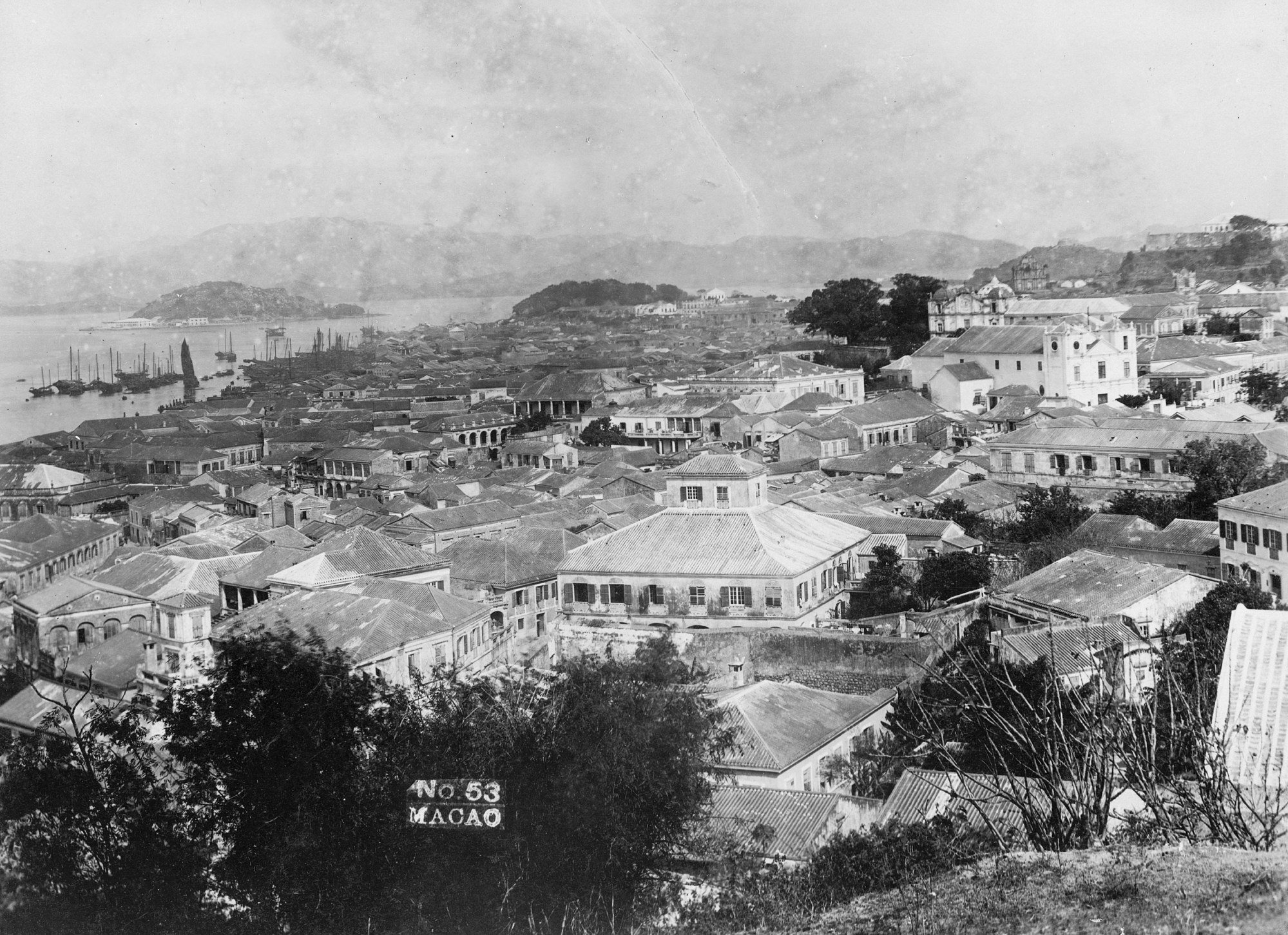
For Elysio Mendes, owner of the Rio de Janeiro newspaper Gazeta de Notícias, on the other hand, the grotto “was built with detestable arches, which deprive it of all its wild poetry and primitive charm”.
Mendes, Callado, (the Vital de Oliveira’s captain) Saldanha da Gama and Motta wrote poems and tributes to Camões that are still in the mission’s memory book.
A charming description of Hong Kong is given by Lisboa. “Hong Kong was ceded in 1842 to England, as a result of the war which, in the name of civilisation, that nation waged on China to impose on it the use of opium. Only a small village of two thousand fishermen or pirates then existed on the site where the city now stands. Today the population of Hong Kong exceeds 150,000 […]
The pirates who dressed as passengers to hijack and plunder Hong Kong ships
“One objective that especially pre-occupied the first governors of Hong Kong was the extinction of the pirates that infested these parts. An English naval division was permanently employed in this project of merciless extermination, in which no quarter was given even to women and children.
“In 1855, in two expeditions of this sort alone, 84 junks were destroyed and four thousand pirates perished. However barbaric such a procedure may be, it is the reason for the near extinction of piracy. Only one or two cases of mad audacity have occurred in the past 20 years, and this has been due to the relaxation of the precautionary measures generally adopted.
“Even today, merchant ships, whether steamers or sailing ships, still sail these seas, armed on a war footing. In the coastal liners, there is a special compartment, closed by strong iron bars, in which the Chinese passengers are locked up and their movements watched by sentries with drawn swords and guns […]
Cheung Chau pirate attack: what really happened in 1912 raid
“The main opium warehouse was established there, and this baneful merchandise, which was then only imported by smuggling, became more and more in demand from year to year. In 1858, the annual importation of opium from China rose to 75,000 boxes, from 10,000 to 15,000 which it is estimated were previously introduced by smuggling.”
A few days before the Vital de Oliveira’s arrival in Hong Kong, there had been two serious cases of heatstroke. The most critical was with second lieutenant Henrique de Pinto Bastos. To make matters worse, the climate in Hong Kong was excessively hot […] and Magalhães recorded that “the heat during the day is horrible, the air you breathe is stifling, leaving the body prostrate. However, at dusk the weather becomes humid, considerably cooling the air.”
It is a mistake to proclaim that the Chinese are an indolent people […] The Chinese are very intelligent, duplicating with perfection any work that they see doneGaldino Cícero de Magalhães, the Vital de Oliveira’s doctor
Magalhães was also surprised by the dress and habits of the Chinese and came to respect them. “Their garments are invariably the same: whether they wear the coloured silks or the white robes, they are always loose and appropriate to the climate. The queue is without question, every Chinese man is obliged to wear it; only when condemned are they obliged to cut it off, an exceedingly harsh penalty among them.
“The women also wear wide pants and a long dressing gown that goes down to the bend of their knees. Their hairstyles are diverse and some are quite strange. Some walk barefoot or in sandals; others have had their feet bound since childhood, deforming them in such a way that they can hardly walk […]
“Their living quarters are clean, as are the interiors of their places of business. They take daily baths in the morning, always keeping their clothes clean.
Are Macau’s days as a global gambling hub numbered?
“It is a mistake to proclaim that the Chinese are an indolent people, we observed the opposite; we saw them active everywhere; it was rare to see them begging […] The Chinese are very intelligent, duplicating with perfection any work that they see done […] The patience they exhibit in resolving any difficulty is unmatched.
“They are very sparing in their meals: rice is the basis of their diet, with the addition of pork (which they are very fond of), cat, dog, etc; spicy sauces and plenty of vegetables […] Good body hygiene is commonplace, but their cities are poorly built and filthy […]
“There has been great confusion in judging the Chinese people by observations made in some parts of their coastline. There is great difference between the Chinese from the north or south of the empire. The former are vigorous, work-loving, intelligent and good-natured. The latter are generally weak, not given to work, weakened by the abuse of opium.
“Emigration, of which we have such a bad memory, was of addicted individuals, mostly beggars. They were men who, seduced by the few coins they were given in advance, cared little about what their end would be […] Instead of workers, we imported beggars and pirates. But the colonisation of coolies from the north should be of great use to our farming.”
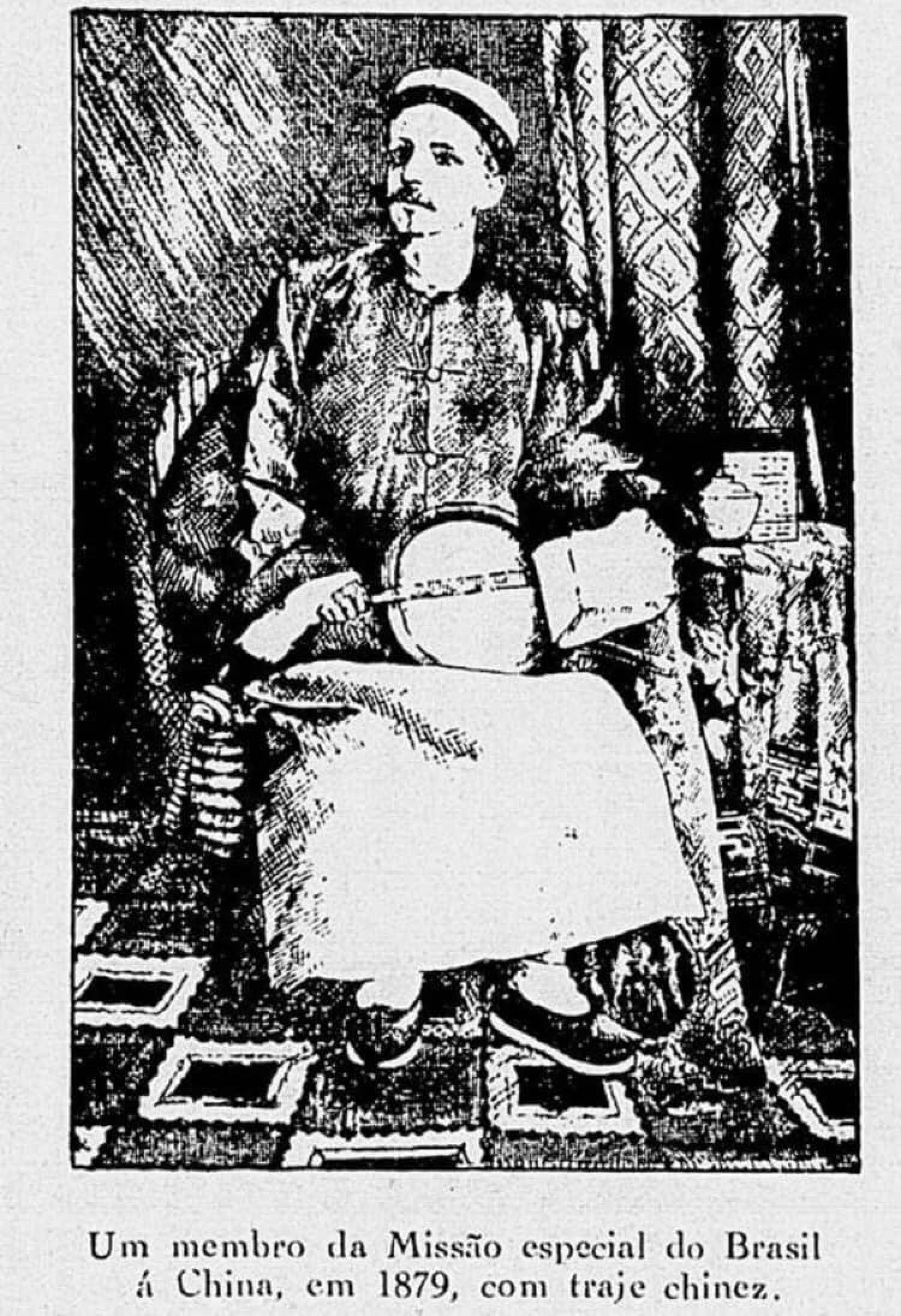
The Brazilian delegation decided to take advantage of their time off and visit Macau. The city, occupied by the Portuguese since the 16th century, was very important because of its trade, exporting to the West the industrial specialities of China, but it began to decline after the British took over Hong Kong.
The inhabitants of Macau “constitute a curious type worthy of study, emigrating in their entirety to earn a living under the protection of the Portuguese colony. What sustains that colony today […] is the tax on gambling houses.”
At the time of the Vital de Oliveira’s passing, Macau had a population of 25,000 Chinese and 5,000 Portuguese. According to Magalhães, the city “is divided into Chinese and European neighbourhoods. The European part contains good public and private buildings […], also worth visiting are the Chinese temples, public gardens and the farm where there is the famous grotto of Camões.
“Getting about, as in Hong Kong, is done in small chairs carried by two coolies. The streets are generally narrow, with many slopes.”

In Macau, they were received by the Brazilian consul, the baron of Cercal, Alexandrino António de Melo. Also the Portuguese governor, Joaquim José da Graça, hosted the Brazilian delegation and gave a well-attended dinner for them.
“That day, Macau was dressed in finery. The governor’s palace was illuminated at night,” Magalhães wrote. “The next day, the Portuguese warships hoisted the Brazilian flag and the infantry guarded the place where the ministers embarked.”
Motta recalled going on a pilgrimage to the legendary cave of Camões. “Camões! Macau! Here are two words that sum up by themselves the prestige of the Portuguese empire in the Orient surviving its annihilation through the centuries!”
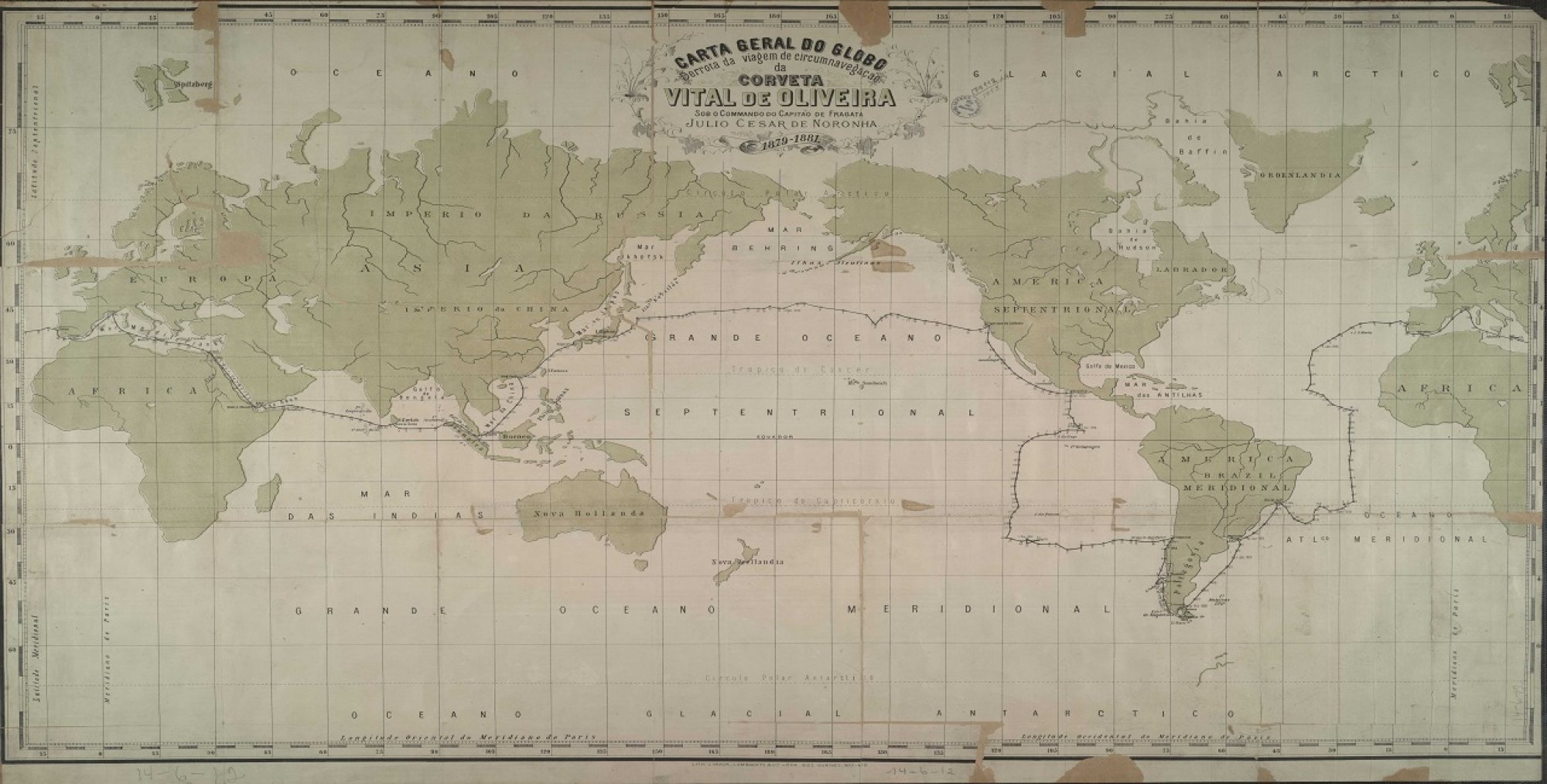
The delegation also visited Canton, “the Chinese city par excellence, with its varied industries, its labyrinth of narrow streets lined with beautiful stores and riddled with signs of a thousand colours, with its floating district and the incessant buzz of a population of two or three million inhabitants”, wrote Commander Noronha.
The 19-day stay in Hong Kong allowed repairs to be made to the ship. The stopover also yielded a diplomatic incident. The fact was not mentioned by any of the Brazilians who wrote about the trip and the diplomatic mission, but it was strongly emphasised in the report by journalist Mendes.
“In all the English possessions, through which the ship passed, the governors always favoured the mission.” However, “the governor of Hong Kong did not send his compliments and the rear admiral Mr. Silveira da Motta understood that he should not visit him either,” reported Mendes, who met with the Brazilians at Hong Kong port and continued on to China with the diplomatic mission.
What are ‘sponge cities’? How China is leading fight against urban flooding
“It is well known that the English government is most opposed to the aims of the embassy [the Brazilian diplomatic mission to China], and that as long as it can, by pressure of any kind whatsoever, and even by intrigues and the means of its selfish policy, upset its calculations, it will do so obstinately,” Mendes continued.
“What it did regarding the slave trade, it wants to do regarding the Chinese emigration. Philanthropy? Sympathy? Love of humanity? Dedication to the great principles of freedom? Disinterested protection of the inferior races?
“It seems that all virtues have come together in England to exercise the noblest of missions, and to, like the missionaries of the faith, strip off their robes to cover the nakedness of other peoples? Yet the truth, it is sad to say, is hidden in the thin layer of their immeasurable selfishness.
“The truth is that Chinese emigration takes place in the ports of the British possessions, by means that, if they save face, do not deceive their authorities, who are closing their eyes, nor the perspicacity of those who follow these businesses closely.
When Hong Kong’s fight against smugglers in speedboats turned deadly
“Singapore and Penang are possessions enriched by the Chinese. Steamers loaded with them leave for Demerara, all of them with paid tickets, but who then have to pay for their work. What is not convenient is emigration to countries that can compete with their colonial products.
“If the love of humanity were the sentiment that animates her not to consent to Chinese emigration through her ports or those of the empire to other countries, would she not better exercise her brilliant role by ceasing to poison with opium those she protects with the loyalty with which Judas kissed Christ? […]
“She, who fought with frenzy and honour for modern civilisation against the slave trade, fed, defended and imposed with the force of her weapons the opium traffic, introducing it in the empire by smuggling, exactly the way the slavers introduced the slaves in Brazil.”
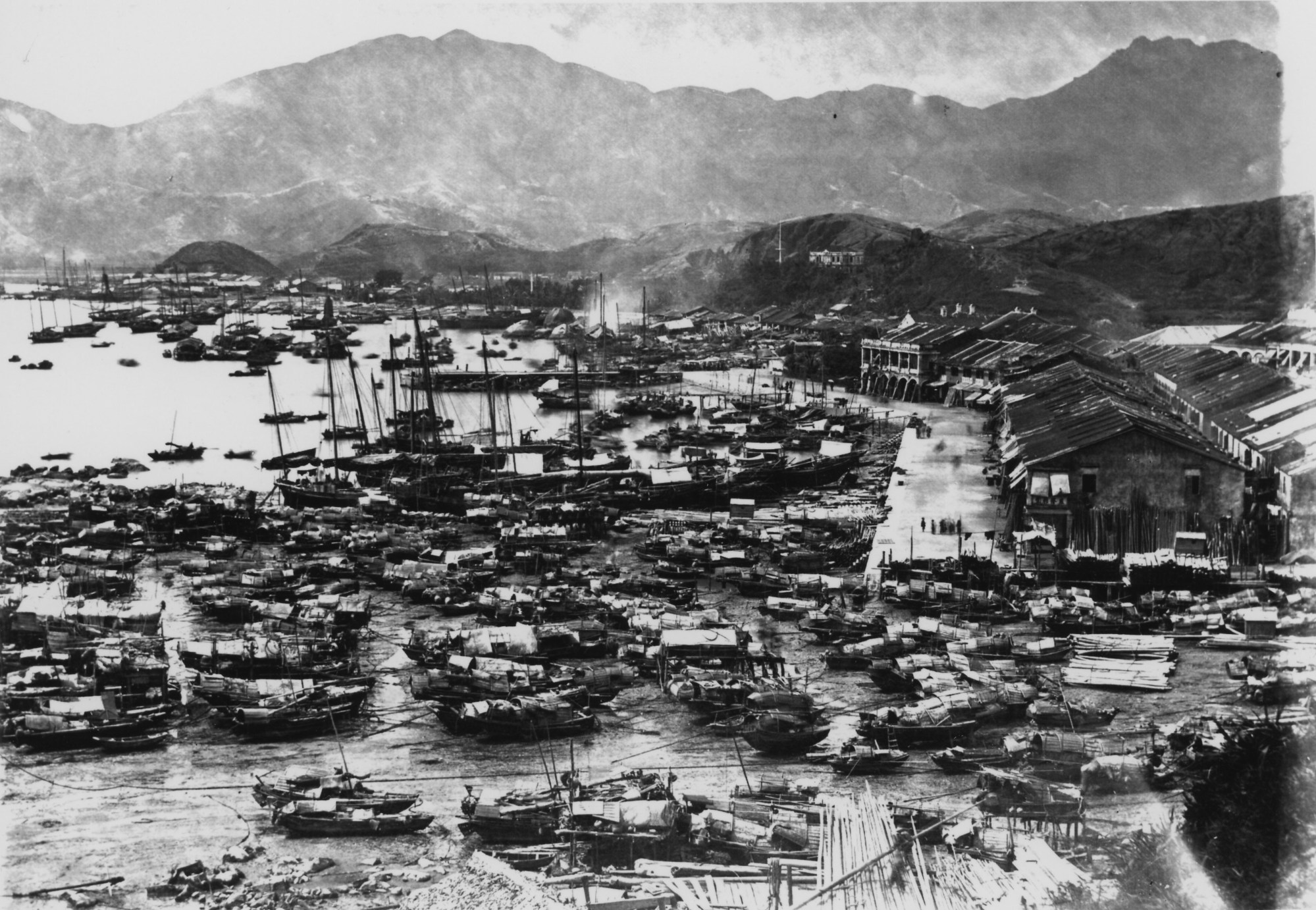
In Hong Kong the ambassadors, entourage, commander and officers were invited by the Portuguese community to attend a party at Club Lusitano in memory of the tricentennial of the death of Camões on June 10, 1880. The party, a literary and musical soirée, followed by supper and dancing, was brightened by the Vital de Oliveira’s band.
In the main hall of Club Lusitano, a bust of the poet was displayed and underneath it the Portuguese and Brazilian flags were intertwined. The governor of Hong Kong, Sir John Pope Hennessy, was at the party.
The ceremony began with the entrance of “about 12 girls carrying bouquets of flowers placed around the pedestal of the bust of Camões. The party went on until 4 o’clock in the morning, with an hour’s break after midnight for supper.”
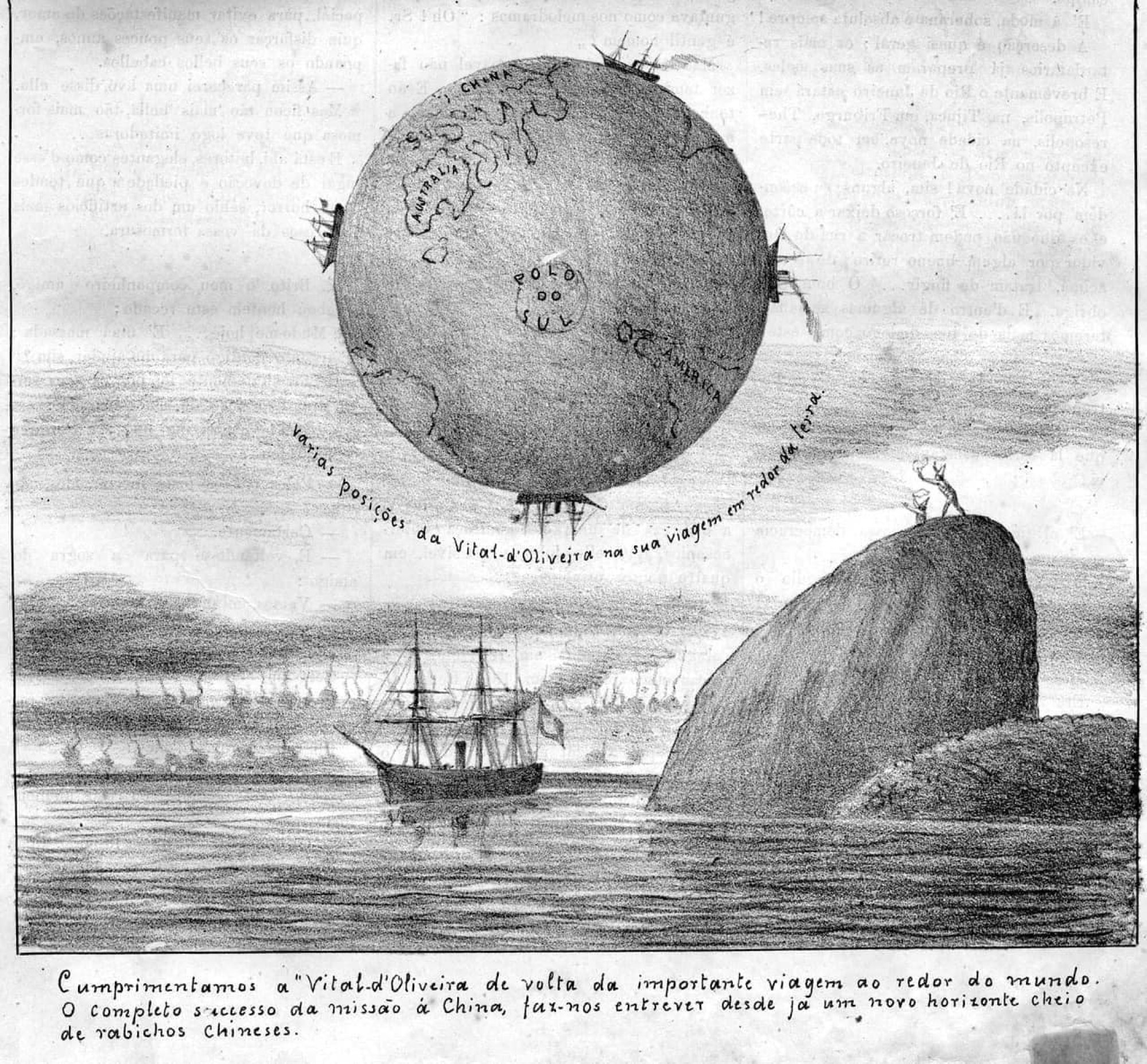
Motta recalls that “these antipodean cousins of ours gave us a gracious reception, of which I have the most pleasant memories, especially for AG Romano, the Brazilian Consul there for many years”.
In Hong Kong it was decided that the Vital de Oliveira would not continue with the China mission. The ship was to return without delay to Brazil, “by the shortest route”, and all military personnel attached to the diplomatic mission were also to return, with the exception of the captain, Saldanha da Gama.
On leaving Hong Kong harbour on June 17, 1880, the corvette was escorted out by Motta in a steam boat. The day before, Motta had written two letters to Commander Noronha.
In one, he stated the corvette’s route, which was to make “a call at Yokohama, San Francisco and Valparaíso, from where it will cross the Strait of Magellan to reach the South Atlantic Ocean.
“After weighing all the considerations of seasons, winds and monsoons, as we have done together, this is the shortest route, at least the safest, and the one that offers the double advantage of always being accompanied by favourable winds in the China and Japan seas, and a good season in the North and South Pacific, while allowing reaching the Strait of Magellan at the most favourable time to cross it.”
This excerpt is adapted from Primeira circum-navegação brasileira e primeira missão do Brasil à China (1879) (2022), by Marli Cristina Scomazzon and Jeff Franco, published by Dois por Quatro, with the English version prepared by Peter Gordon.
